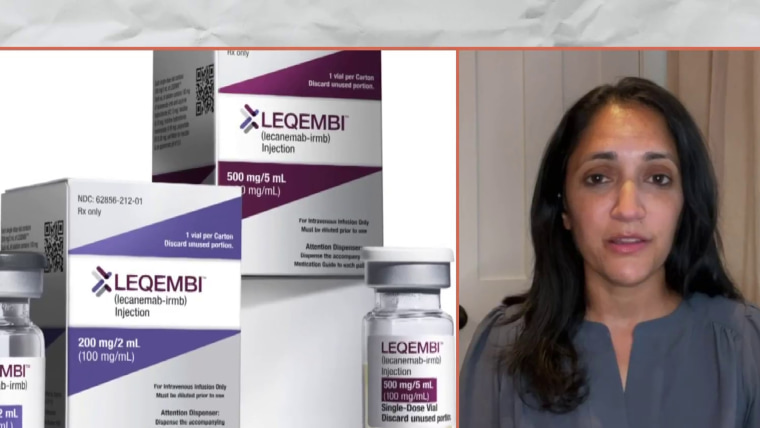When my mother-in-law was diagnosed with Alzheimer’s dementia a decade ago, we scoured the medical literature in hopes of a breakthrough. Finding a clinical trial we could enroll her in seemed a heck of a lot more productive than spending our emotional and mental energy watching as her reality shifted away from our reality, and we gradually lost the person at the heart of our extended family.
When my mother-in-law was diagnosed with Alzheimer’s dementia a decade ago, we scoured the medical literature in hopes of a breakthrough.
Alzheimer’s was then, and it remains now, a disease whose progress cannot be stopped or reversed. Existing medications are chiefly prescribed to ease the disease’s symptoms. But on Thursday, the Food and Drug Administration granted full approval to a new medication called Leqembi, or lecanemab-irmb by its generic name, that aims to at least slow the progression of the disease while it is still mild. The medication’s phase 3 trial, published in January, showed a small effect on decline for those with early and mild dementia: At 18 months, people in the treatment group had slightly better dementia scores than those in the placebo group.
Does that mean that lecanemab is a game changer? No, not yet.
First, the drug does not reverse disease or prevent decline. Patients on lecanemab continued to progress to worsening signs of dementia over time; it’s just that those on the drug had, at 18 months, slightly less progression.
Using a score on a staging instrument used to quantify dementia severity across six domains (memory, orientation, judgment and problem solving, community activities, home and hobbies, and personal care), those on the drug had, on average, a 0.45-point less of a decline than those who received a placebo.
What would a fraction of a point on an 18-point scale mean in one’s life? Would it make a meaningful difference in how much that person feels like themselves or enjoys their time with family and friends? The timeline of Alzheimer’s is bewildering and insidious. It will be difficult for patients and families to get excited about a drug when, after the patient uses it, their condition is still worse than before. How could they even be sure that the drug has helped and made a patient’s Alzheimer’s slightly less worse than whatever “regular worse” would have been? We don’t know yet if the drug will help people with Alzheimer’s to communicate meaningfully with their families longer, or live independently longer.
Overall, the benefits are small to uncertain.
On the cost side, things stack up. The treatment is high intensity and requires patients to receive one-hour infusions of the drug every two weeks. The risks include brain swelling and cerebral hemorrhages, and because of these potential adverse effects, additional visits for serial brain imaging are required. The financial burden to individuals and taxpayers is high: recent estimates place the cost for the drug alone at around $26,500, ancillary costs (like those additional MRIs and clinical visits to monitor for brain swelling or bleeding) around $7,300, and patient out of pocket costs around $6,600. Altogether, potential Medicare spending could increase by $2 billion, if not more.
Not only was the trial limited to 18 months, but it was restricted to patients with very mild disease and it lacked diversity; for example, only 4.5% of participants were Black. It remains to be seen what the results would be over longer periods of time or across the whole population.
Estimates place the cost for the drug at around $25,900, ancillary costs (like those additional MRIs and clinical visits to monitor for brain swelling or bleeding) around $7,300 and patient out-of-pocket costs at around $6,600.
FDA approval and Medicare coverage give the imprimatur of a standard of care. But this therapy is for a narrow population of patients, and they and their families will need to weigh truly modest results against all of these costs, limitations and uncertainties.
Overall, lecanemab would have made little difference to my mother-in-law. I can’t muster much excitement about it, even in the shadow of her recent death. Would we have signed her up for a trial of the medication if she were eligible? Probably! But that doesn’t say as much about this drug’s properties as much as it says about the absolute lack of other options to halt disease progression and our helplessness and desperation.
More than anything, lecanemab is hope in an IV drip bag: If a measurable (if not super impressive) difference can occur, perhaps therapies in our near future, delivered with state-of-the-art early diagnostics, can ward off decline in the first place and reverse the course of disease already in progress.
In the end, I’m guessing this drug will look best in the rear-view mirror, when we can characterize it as one milestone in a journey that ends with prevention and cure.

